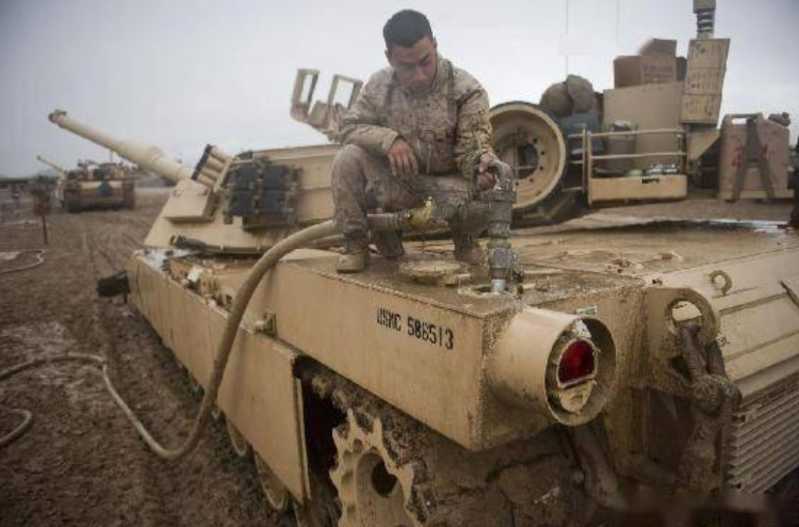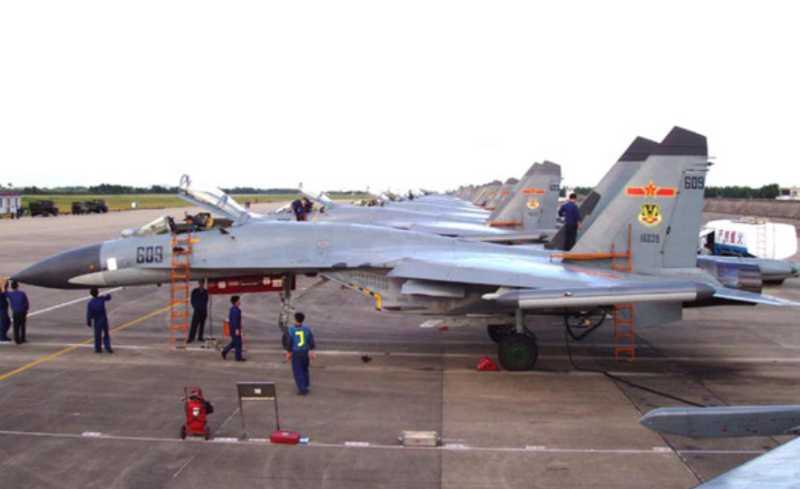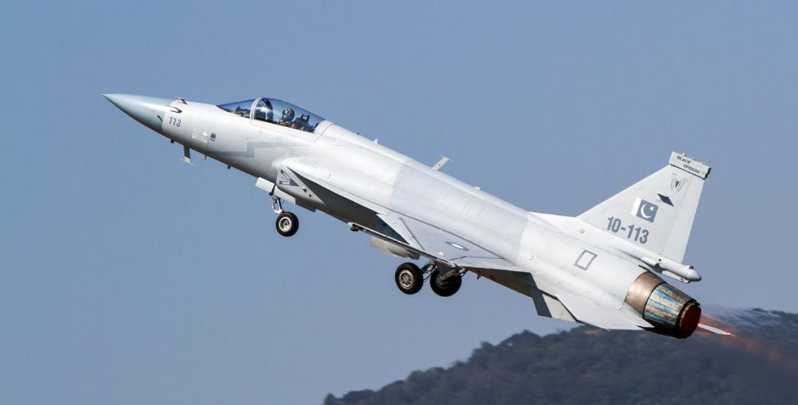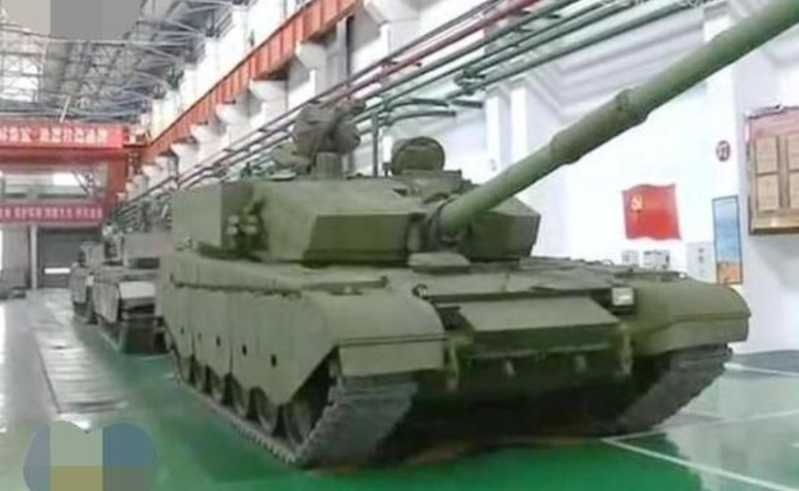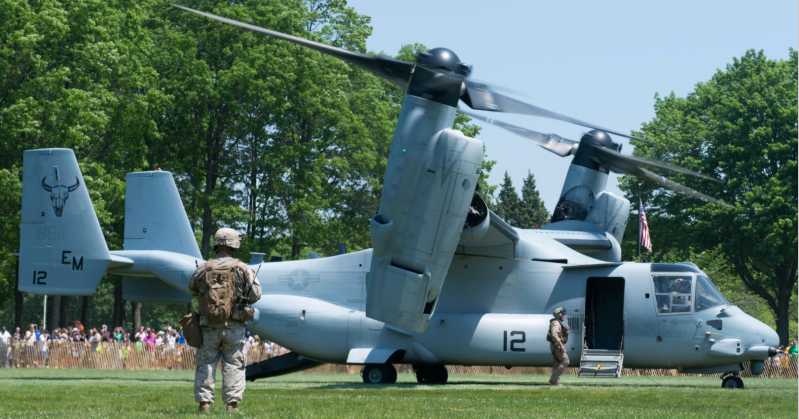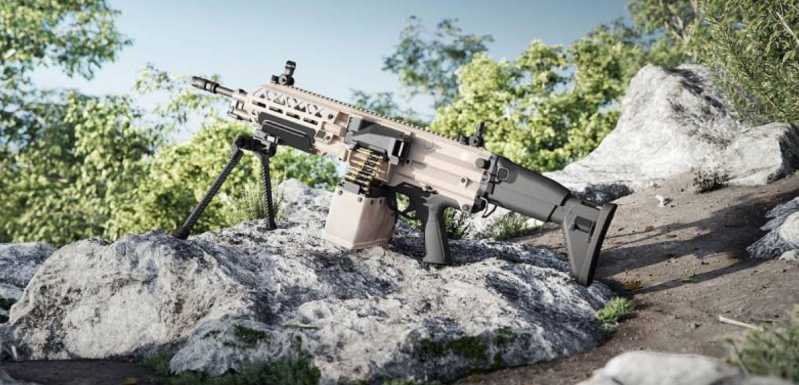On the battlefield between Russia and Ukraine, the battle between tanks and armored vehicles is undoubtedly a major highlight, especially as the West provides Ukraine with M1, Leopard 2, Challenger 2 and other active main battle tanks and various types of infantry fighting vehicles, the battlefield between the two sides has become increasingly tense and fierce. However, many netizens have raised questions. Faced with such a complex equipment model, can the Ukrainian army’s logistics system support it? After all, in the early stages of the conflict, the Russian army has given a textbook negative example, vividly showing us how the weak logistics of the steel torrent has become a spent force. As the saying goes, "before the troops move, the food and grass must go first", and in modern warfare, fuel is undoubtedly the blood of the army. Without fuel, even the most powerful armored forces are just a pile of iron lumps. So, how does the US military ensure the fuel supply of its huge armored forces?
As the only armed force in the world that needs to be deployed globally, the US military has established a complete and mature logistics supply system since the Cold War era. The capillaries of its logistics arteries can reach every corner of the earth. From the desks of the Pentagon to the backpacks of front-line soldiers, they are closely connected by a logistics network, which operates effectively through various levels of headquarters, logistics facilities and logistics systems to fully guarantee the US military’s combat operations around the world.
The United States has six combat commands around the world, each of which is responsible for all military forces in its theater of operations. In the event of a war in Europe, the corresponding command organization is the United States European Command (EUCOM). The European Command has a related department serving the Army, called the "United States Army Europe and Africa Division". The Army is legally responsible for managing the land oil supply of all US and allied ground forces, regardless of military branch. Thanks to the Cold War, NATO has deployed a large amount of infrastructure for storing and transporting fuel in Europe, including the NATO pipeline system across Europe, which has 10,000 kilometers of pipelines and nearly 4.8 billion liters of fuel storage capacity. Assume a scenario: the US military is to launch combat operations in Poland and Turkey at the same time. The United States must provide fuel for a deployed heavy battalion with tanks, infantry fighting vehicles, and about 400 to 500 soldiers, so how does the fuel supply system work?

Defense Logistics Agency
First, the Defense Logistics Agency (DLA) under the US Department of Defense will start to act. Although this agency is inconspicuous, it is responsible for purchasing various key supplies for the military, from MRE military rations to aircraft parts. The agency buys fuel of various specifications from suppliers through its subordinate office, Defense Logistics Agency Energy (DLA ENERGY), and the military services provide reimbursement for them. DLA Energy supports the European region through its European and African offices in Germany, and downstream logistics are the responsibility of combatant commands. The Army’s service is responsible for reviewing fuel requests from its logistics commands and then forwarding the requests to the Joint Petroleum Office (JPO) of the United States European Command, which approves these requests and DLA Energy places the actual order.
Ideally, DLA Energy will try to purchase fuel from the host country. The US military purchased fuel from commercial refineries in Kuwait during its military operations in Iraq. If host country conditions do not allow, and if there are no pre-positioned fuel stocks or pre-established fuel terminals in the area of operations, the Department of Defense must coordinate large-scale sea transportation of fuel, which will be carried out by the Military Sealift Command (MSC). Sea transportation is the most economical way, but it is also relatively slow and takes weeks to transport fuel to the combat zone.

Theater Logistics Command
Once the tanker arrives in the theater, it unloads fuel into the offshore fuel transfer system, which includes an auxiliary ship and an onshore beach terminal unit (BTU). In underdeveloped areas lacking port infrastructure, the two are connected by a mooring buoy and a 12-kilometer-long flexible hose. Once the fuel enters the output of the BTU, the task of transporting the fuel will be taken over by the military.
If there is a lack of infrastructure, the military can lay its own pipelines. Large permanent pipelines are the most efficient means of transporting fuel over land. Rail is also an option for transporting bulk fuel, but both options lack the flexibility of low-level distribution, which requires vehicles and temporary pipelines to make up for it. In particularly harsh and remote areas, fuel must be transported by air, or even by helicopter. For example, the Marine Corps’ CH-53 "Sea Stallion" helicopter can be equipped with a tactical bulk fuel delivery system, and each "Sea Stallion" fuel tank can carry 10,000 liters of fuel. The organization that plans and controls the fuel supply in the theater is the Army’s Theater Logistics Command (TSC). This is a grassroots Army logistics command organization in a specific area, controlling all Army logistics above the division level.


For operations in Europe, the 21st Theater Logistics Command will be responsible. Because in the previous assumption, the army was also in Poland Fighting in Turkey, which is far away from each other and in very different environments, the theater logistics command may deploy smaller expeditionary logistics commands (ESCs) to more carefully coordinate the logistics of each region. These ESCs are essentially extensions of the theater logistics command, managing all logistics in their smaller areas of operation. Therefore, while the theater command coordinates fuel distribution throughout Europe and Africa, Poland and Turkey each have independently operated expeditionary logistics commands.
Logistics Brigade
Under the logistics command and its branches are subordinate units such as logistics brigades and engineer teams. These subordinate units are the real workers, responsible for the specific work of storing, transporting and distributing supplies. Among them, the logistics brigade is a flexible organization, and the division-level logistics brigade is composed of the rear The logistics command is under the command of the logistics command, but it is also under the combat troops of the division. This is because logistics work requires synchronization and coordination capabilities beyond the division-level units.
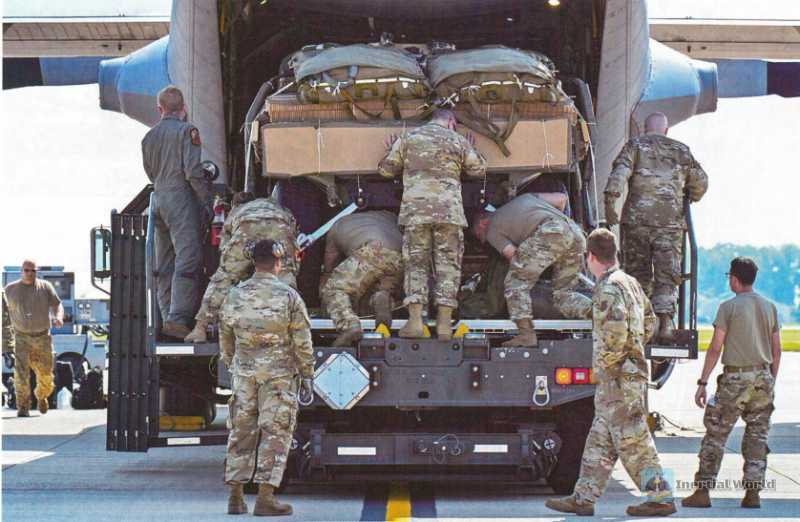

The fuel support battalion under the logistics brigade is responsible for operating the fuel support network. Each battalion manages 600 kilometers of fuel pipelines, fuel terminals and a fleet of medium-sized trucks for decentralized transportation. If the troops have the conditions to assemble before the war, the logistics units must arrive in the war zone before the combat troops and deploy fuel storage points and pipelines. A real-life example is that before the US military invaded Iraq in 2003, The fuel supply system was deployed in five months.
When combat troops enter the theater, each logistics unit pushes fuel to the corresponding brigade combat group, which has limited fuel storage capacity. Their fuel system supply points rely on large foldable fuel bladders to store fuel in the short term. A fuel supply platoon can establish up to two 520,000-liter and one 1.32 million-liter supply points to support up to three brigade-level troops, and needs to be able to deliver up to 550,000 liters of fuel directly to each unit every day through fuel trucks and tanker trailers. Trucks are the least efficient mode of transportation, but they are flexible and do not require construction and laying of pipelines. The fuel support company can provide supplies to troops in a larger area, and a company has a fuel supply point consisting of four 920,000-liter foldable tanks.
Basic logistics units
Ideally, fuel supply points at the division level or higher will handle fuel supply in the rear area, while logistics units at the brigade level and below can provide tactical refueling closer to the battlefield. Each Brigade Combat Team has a support battalion (BSB), which includes a distribution company equipped with tankers to receive fuel from the logistics brigade. The number of tankers equipped to each company depends on the type of brigade, as different vehicles have different fuel requirements. The tracked vehicles of the armored brigade are undoubtedly the most fuel-intensive. It is expected that an armored brigade can consume up to 370,000 liters of fuel per day in combat, while the forward brigade needs 140,000 liters per day and the infantry brigade needs 98,000 liters per day, but these units are insignificant compared to the heavy combat aviation brigade, which can consume up to 530,000 liters of fuel per day.
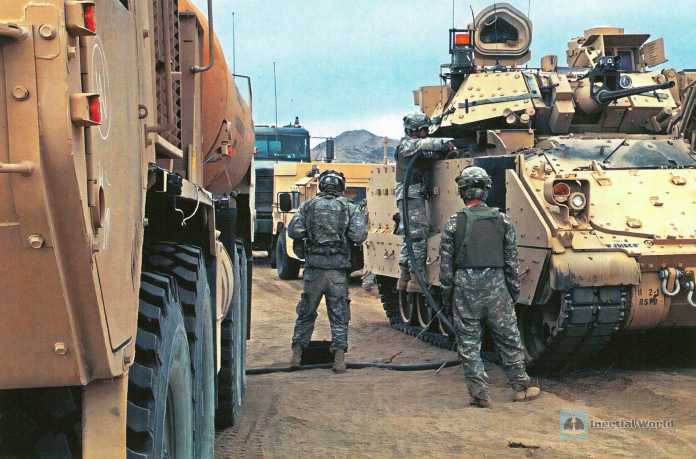
Tactical fuel distribution mainly relies on M978HEMTT tankers and tank trailer modules. In theory, an armored brigade should be equipped with 18 M978HEMTT tankers in its brigade support battalion, 10 in the forward brigade and 5 in the infantry brigade. Brigade combat teams do not have static fuel storage facilities like fuel supply points, nor do they have so many tankers. They use modular fuel systems (POS) to distribute fuel in large quantities. The tankers of the mobile brigade deliver fuel to the infantry support companies (FSC) that directly support each combat battalion. When they arrive at the rear of the combat battalion, the supplies are broken down into logistics packages according to the company’s needs, and then transported to the logistics release point (LRP), where the company commanders receive the logistics packages and take them to their respective companies on the front line for resupply.
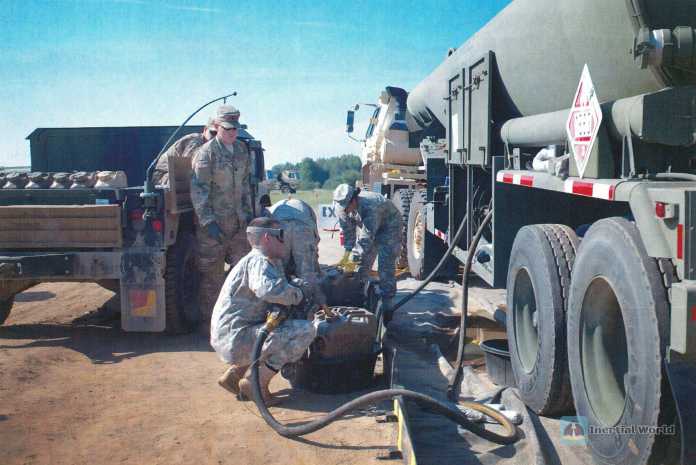
The infantry support company under the combined arms battalion is equipped with 6 M978 heavy tankers, which can provide instant tactical refueling for the battalion company, and can provide 110,000 liters of fuel at a time. A company’s M1A2 tanks need to be refueled with about 25,000 liters of oil at a time, and refueling a company’s Bradley infantry fighting vehicles requires 10,000 liters. A battalion headquarters with three mechanized companies consumes about 65,000 liters of fuel per day. Therefore, when a battalion is in combat, the fuel held by the infantry support company should be enough for two days of use behind the ground or between two rear positions. An M978 tanker can refuel multiple vehicles at the same time. Generally, three M978s refuel four Bradley infantry fighting vehicles respectively, and other vehicles wait on the refueling line. Time is of the essence in combat or marching, so the release of fuel is usually timed to provide a predetermined amount of fuel, rather than filling up every vehicle. Other Bradley fighting vehicles wait for their turn in the assembly area, and a row of tanks provides security for the refueling point. If space is limited and the refueling line cannot be lined up in a row, the refueling line can adopt a "hamburger" layout, with vehicles placed on both sides of the tanker. Wheeled vehicles with smaller fuel tanks can also carry 20-liter drums for convenient refueling anytime, anywhere.
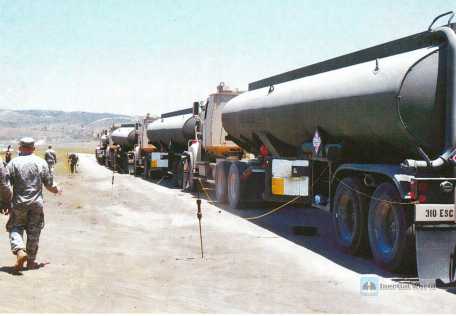
Summary
Let’s summarize the fuel logistics process of the US Army in the scenario of fighting in Europe. The theater logistics command and their subordinate expeditionary logistics command make overall plans for the fuel distribution in the theater and submit requests to the headquarters of the US Army Europe and Africa. The Army Command in the region signs the request and forwards it to the General Command of the European Armed Forces, which verifies it with the Joint Petroleum Office. The Energy Division of the Defense Logistics Agency places orders with civilian suppliers and then releases the bulk fuel purchased from suppliers to the theater logistics command.
The logistics forces receive the fuel and distribute it to the troops. For the fuel received by sea, it is transferred to the shore through the beach terminal unit. Then it is transferred to the tactical fuel storage terminal which can store millions of liters through pipelines. Then the fuel is transferred to the fuel system supply point through pipelines. There, the logistics brigade distributes the fuel to the logistics battalion of the mobile brigade and division. The brigade support battalion distributes the fuel to the infantry support company, which refuels the combat battalion it supports. We can always see those advanced weapons galloping on the battlefield and killing people everywhere in the news, but what we can’t see is the need for a complete and complex logistics system to support them.
Back to the Ukrainian battlefield, most of the main battle tanks aided by the West are heavy and powerful, so their fuel consumption is naturally considerable. The types of fuel used are also different, which will undoubtedly make the Ukrainian army’s logistics system overwhelmed, especially when the energy infrastructure in Ukraine is frequently damaged by Russian air strikes. It is very difficult to establish a smooth fuel supply system. Therefore, while the West is aiding the Ukrainian army with a large number of tanks, it will certainly use NATO’s existing logistics system to provide support for it. Otherwise, even if these tanks and armored vehicles are sent to the front line, they will become ineffective due to lack of fuel.


